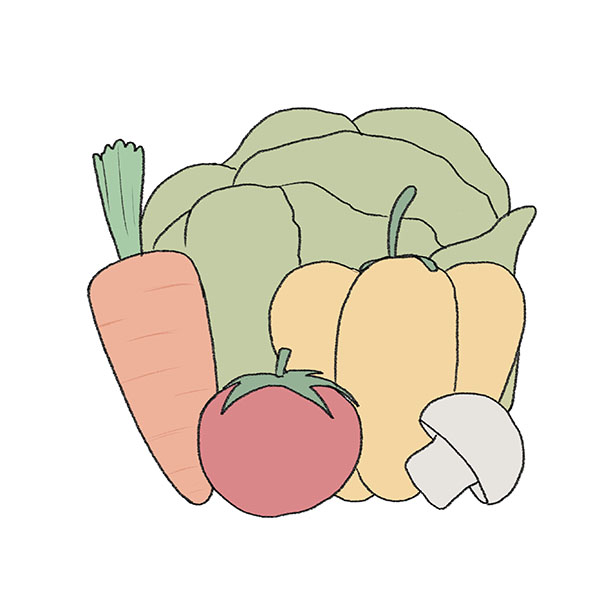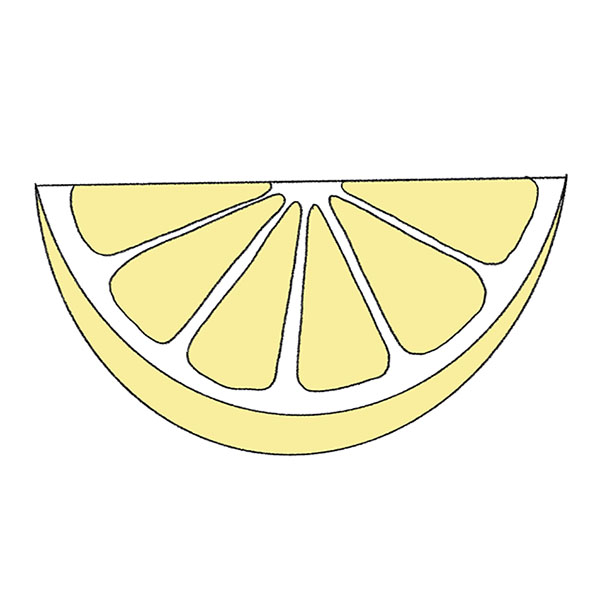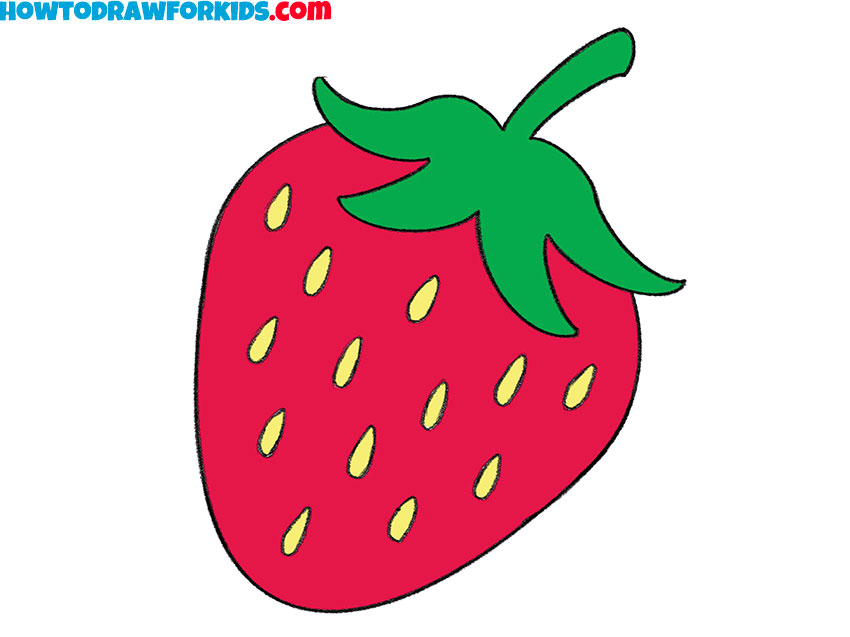How to Draw Spaghetti
I’d like to present another lesson in food drawing, where I will show you how to draw spaghetti – one of the most beloved dishes worldwide.
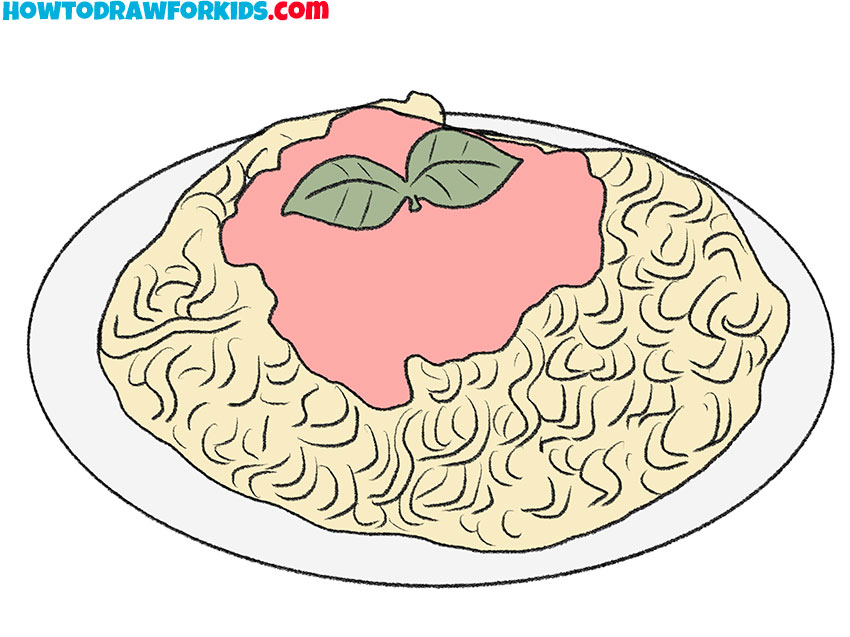
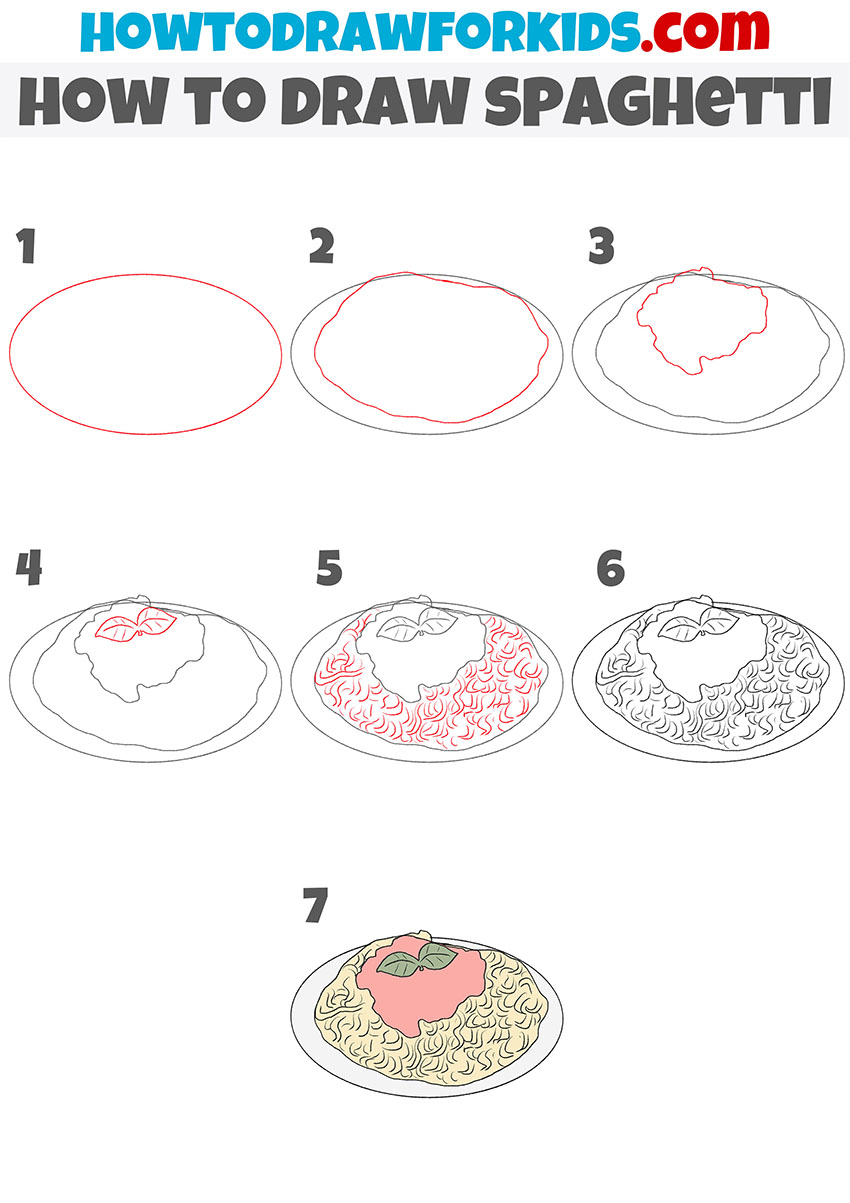
How to Draw Spaghetti: Basic Information
Similar to other tutorials on my site, this lesson on drawing spaghetti is designed not only to demonstrate the process of sketching an object but also to highlight some really important elements of fine art.
Spaghetti’s inherently random and tangled texture provides a perfect subject for young artists to practice creating complex and chaotic textures. This tutorial guides them through the process of drawing the uneven, intertwined appearance of spaghetti noodles.
This drawing exercise also introduces young artists to the challenge of depicting various textures within a single composition. They learn to distinguish and portray the glossy, viscous texture of the sauce, the firm yet supple texture of cooked pasta, and the smooth, hard surface of the ceramic plate. Handling these diverse textures in one drawing helps artists develop skills in contrast and sensory representation.
Color is a powerful tool in art, especially when conveying the appeal of food. This tutorial teaches young artists how to select and combine colors to make the food not only look realistic but also appetizing. They learn to use warm, rich reds for the sauce and subtle yellows for the noodles, with a touch of green for the basil as an accent.
The tutorial subtly introduces the concept of composition in both visual and culinary arts. Young artists learn to balance elements like placement of the sauce and basil, just as a chef considers the placement of garnishes.
Spaghetti Drawing Tutorial
Materials
- Pencil
- Paper
- Eraser
- Coloring supplies
Time needed: 30 minutes
How to Draw Spaghetti
- Draw the outline of the plate.
Creatw the base of your composition, which is the plate. Carefully sketch a broad, elongated oval to outline the rim. This shape should be smooth and even, as it represents the outer boundary of your plate. Focus on symmetry and proportion to ensure that the plate looks realistic and smooth.

- Add the outline of the pasta.
Draw loose, wavy lines inside the oval to represent the outlines of the noodles. The arrangement of the outlines should appear random and natural. Do not fill the entire area of the plate, leave a small space between the outline of the spaghetti and the outer outline of the plate.
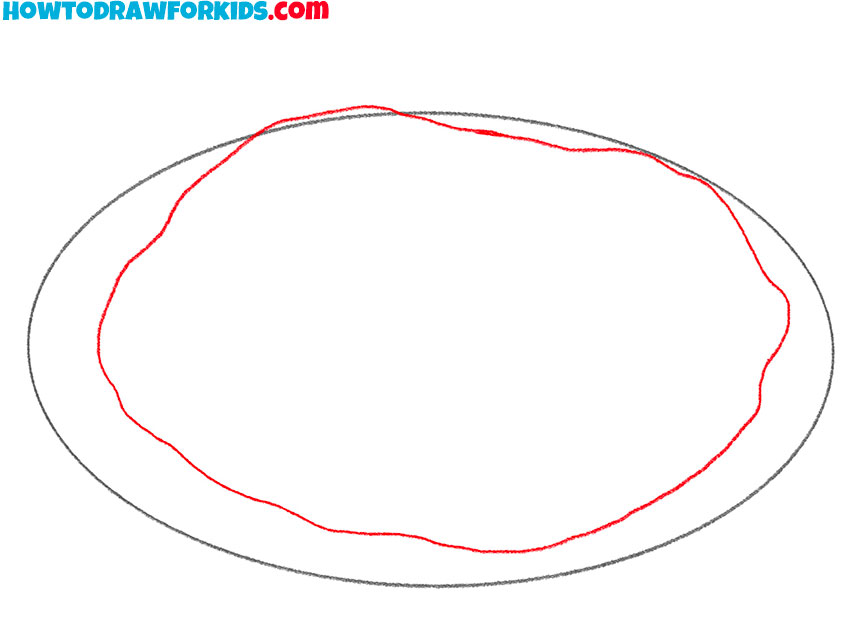
- Illustrate the outline of the tomato sauce.
Draw an irregular, blob-like shape to represent where the sauce has been spooned onto the pasta. This shape should be uneven and organic. The placement and shape of the sauce are pivotal in bringing a focal point to your composition, highlighting the central part of the meal.
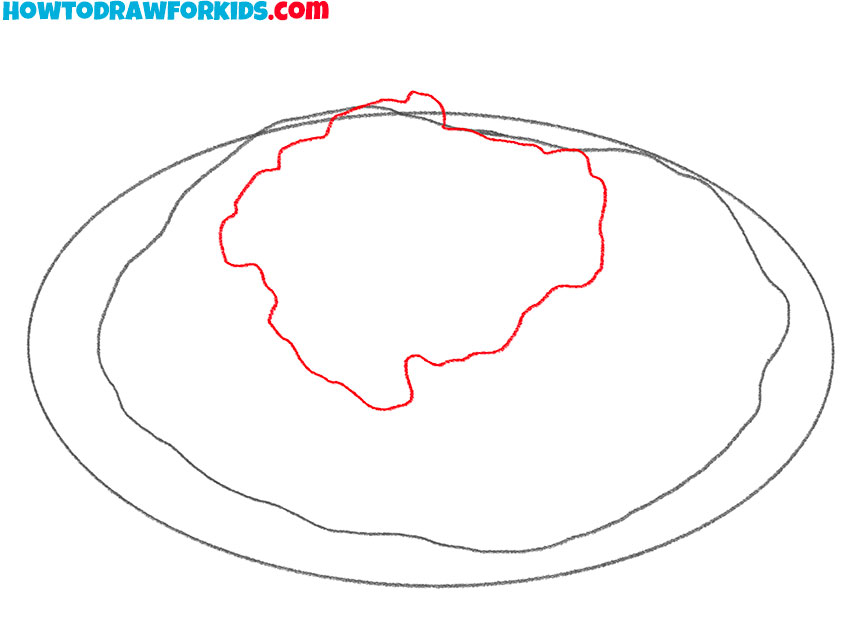
- Draw two basil leaves at the top.
To add freshness and a pop of color, sketch two basil leaves on top of the central sauce area. Both basil leaves should be roughly equal in size and connected at the center by a stem. Each leaf should be detailed with a pointed tip and visible veins, conveying their texture.
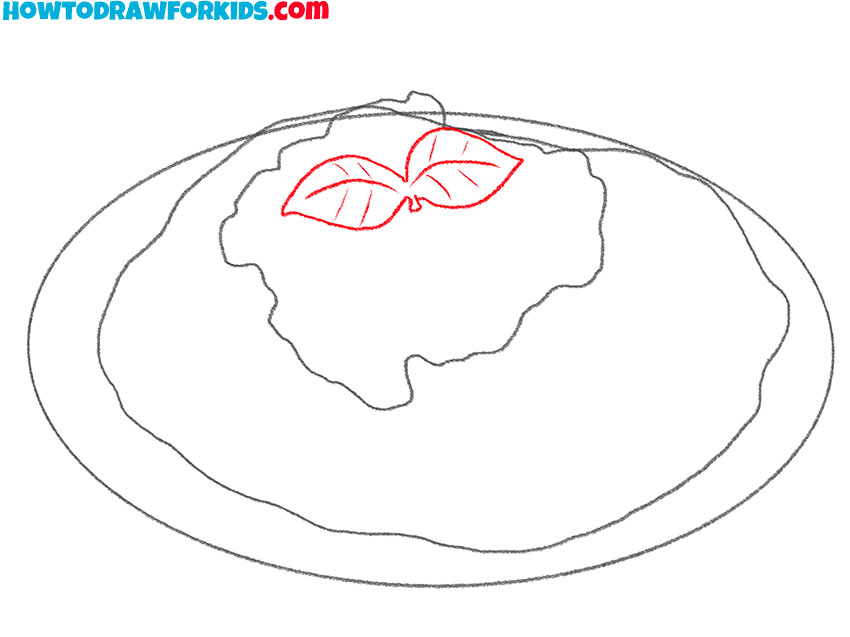
- Detail the pasta.
Add more detailed lines within the initial outlines. These new lines should be thinner and more precise, helping to define individual noodles. You can use varied line weights to suggest shadow and light, giving the spaghetti a three-dimensional appearance.
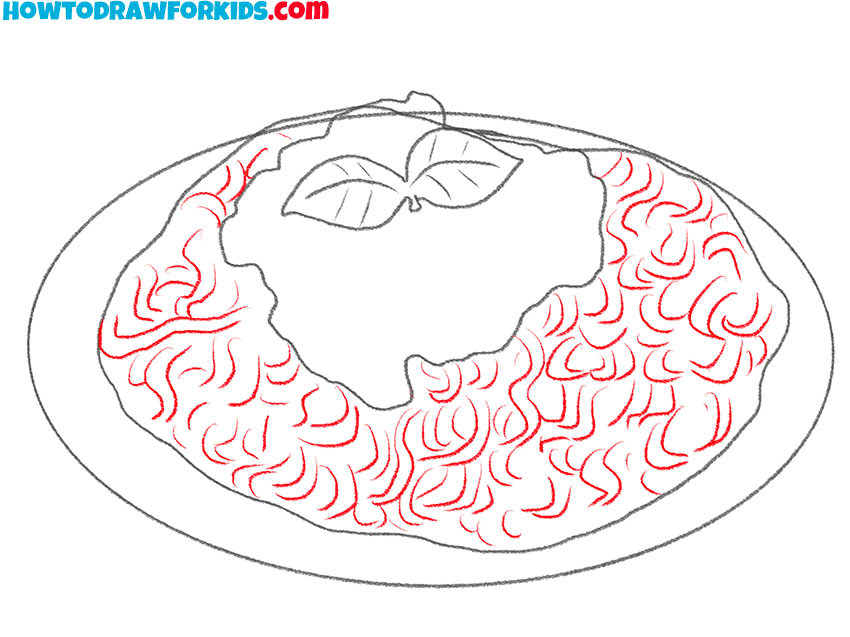
- Correct any inaccuracies.
Review and clean up any excessive lines and ensure that each element is distinct and well-defined. Detail the outlines of the spaghetti, sauce, and basil leaves. Make any necessary corrections to the shapes and textures to make your spaghetti drawing more realistic.
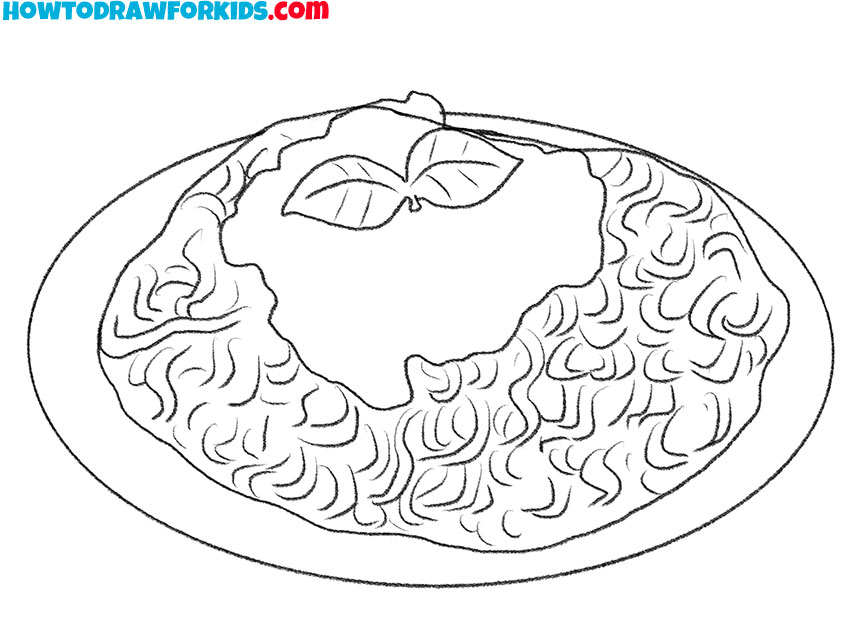
- Color the spaghetti drawing.
Use a pale yellow or light beige for the spaghetti to show the cooked appearance. Color the sauce in a vibrant tomato red, making it the highlight of the dish. The basil leaves should be a bright, fresh green, providing a sharp contrast to the red sauce.
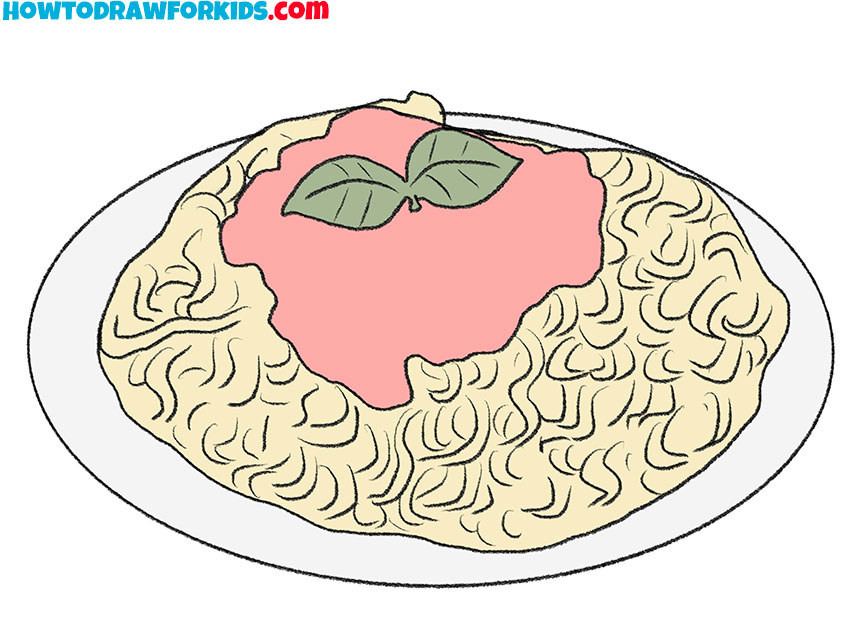
Additional Content
I have prepared a valuable resource for you – a free PDF file, readily accessible with just a click. This file is a streamlined version of this spaghetti drawing tutorial, encapsulating all steps necessary for creating your pasta artwork.
This PDF proves especially practical when you are offline. I encourage you to download it promptly and keep it within easy reach. It serves as an efficient guide, enabling you to engage in spaghetti drawing at your convenience, wherever you may be.
Learn How to Draw a Spaghetti Sven Better
After completing the basic tutorial on drawing a plate of spaghetti, young artists can elevate their artwork by adding unique touches and details that reflect their personal style. Here are some ways to make the final drawing more interesting and distinctive:
- Instead of a flat, top-down view, try drawing the plate of spaghetti from a side angle or a slightly tilted perspective to add depth to your composition.
- Sketch utensils like a fork twirling some noodles or a napkin beside the plate. Adding these elements can provide context and scale, making the scene more realistic.
- Introduce a specific light source to create dramatic shadows and highlights on the plate and its contents. This can give your drawing more voluminous look.
- Illustrate your plate of pasta at an picnic, under a clear, sunny sky. You can add elements such as a picnic basket, perhaps a few whimsical ants to add a touch of liveliness.
- Place a chef’s hat beside the plate to suggest that a chef has just prepared this appetizing meal. This detail can be located either in the foreground or in the background.
- Consider drawing additional toppings like Parmesan cheese, chili flakes, or other herbs. These can add complexity and make the composition more interesting.
How to Draw Spaghetti: FAQ
For those looking to deepen their understanding and boost their skills in drawing spaghetti, the following FAQ section provides a detailed exploration of advanced techniques and key insights. This guide addresses various aspects of illustrating this popular dish, from achieving realistic textures and incorporating environmental elements.
To depict freshly cooked spaghetti, draw the noodles with a smooth, slightly glossy appearance, using lighter colors and subtle highlights to suggest moisture. For leftover spaghetti, illustrate the noodles as more clumped together and less shiny, using duller colors and adding slight textural details like rough edges or bits sticking out, to show dryness.
To create a dynamic scene of spaghetti being twirled on a fork, start by drawing the fork at an angle with a few noodles looped around it. Sketch the noodles in a spiraling motion up the fork, with the ends hanging off loosely to show the sense of movement. Add slight motion lines around the fork and noodles to show the twirling action.
Consider adding elements like slices of meatballs, chopped herbs, or pieces of vegetables. Draw these items in proportion and intersperse them among the noodles. For example, meatballs can be shaded with darker tones and textured to reflect their cooked surface, while herbs like parsley can be finely detailed with thin, delicate lines.
To convey warmth, use warm colors like yellows, oranges, and reds. In black and white drawings, create a soft glow around the plate by subtly shading outward from the center. You can also draw steam rising from the plate, using soft, wavy lines that gently fade as they move upward.
Use focal points such as a brightly colored garnish or a uniquely shaped utensil. Directing the composition’s lines toward these points can guide the viewer’s eye to areas of interest.
Conclusion
This tutorial has guided you through the steps of drawing a plate of spaghetti, and I hope you found it interesting and informative. If this lesson piqued your interest, I encourage you to visit other food drawing tutorials available on my website. I also offer a variety of food-themed coloring pages that might catch your interest.
Please share this tutorial with your friends, and don’t forget to subscribe to receive updates on new tutorials and content. Your support helps me continue creating helpful and inspiring drawing tutorials.

